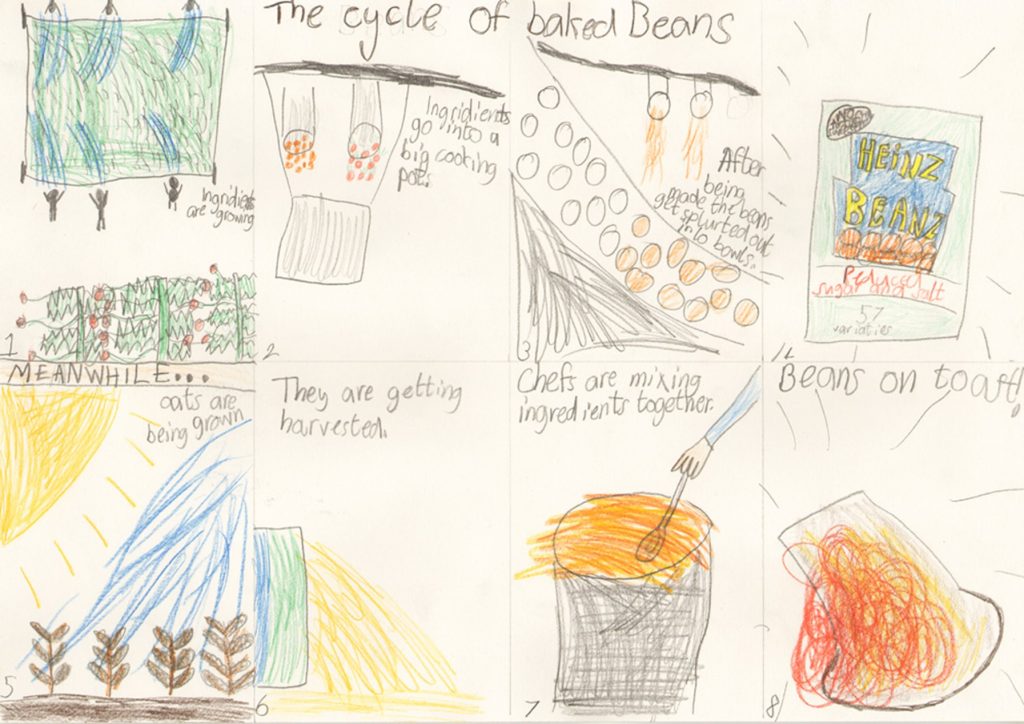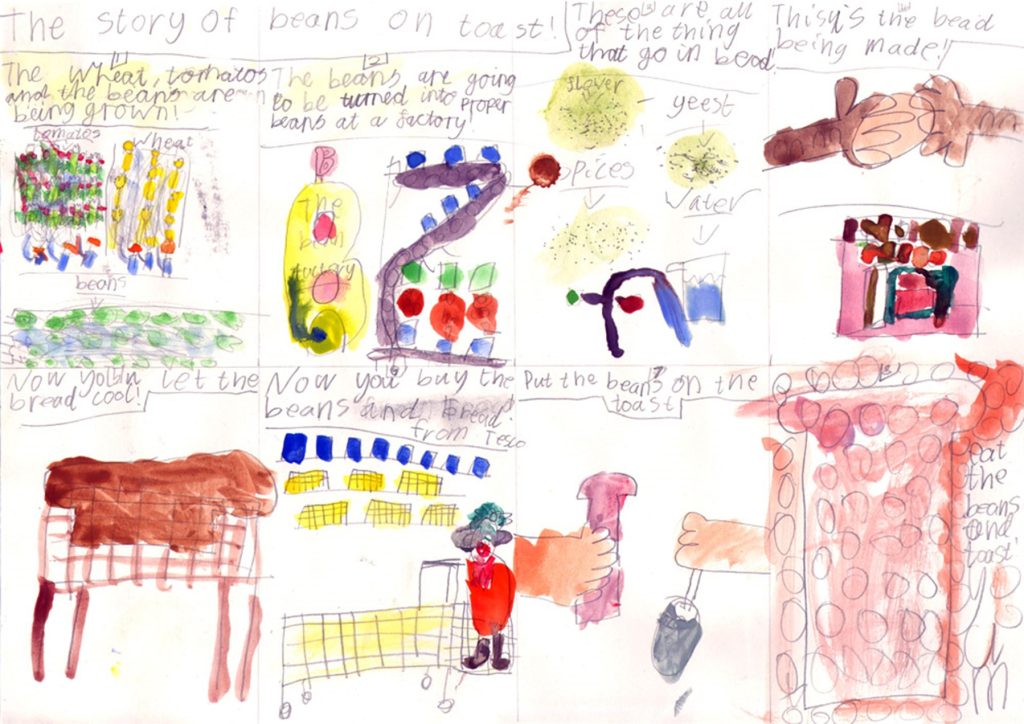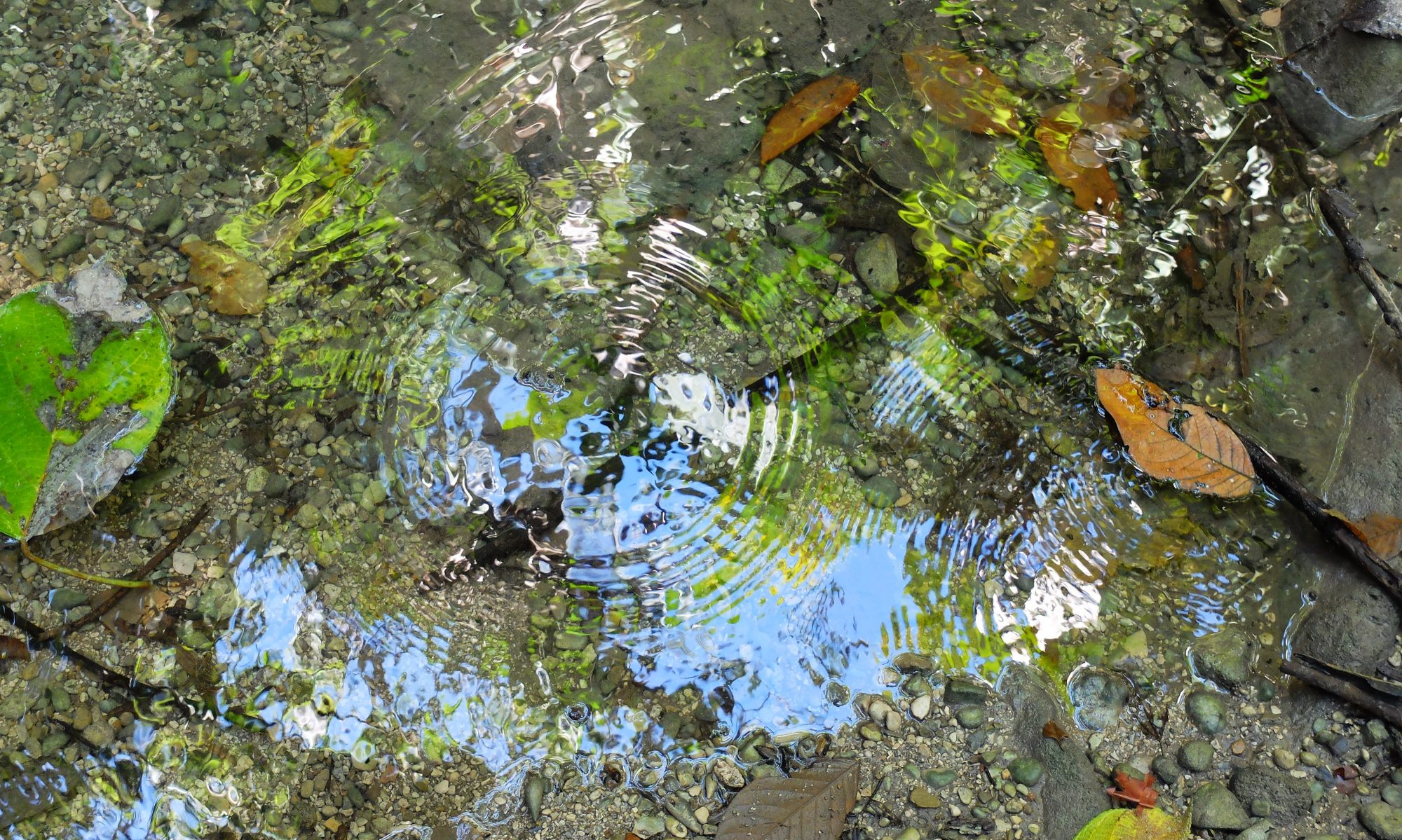Post by Jean Duncan, Artist in Residence at the UNESCO Centre for Water Law, Policy & Science

As the new Artist in Residence with the UNESCO Centre for Water Law, Policy and Science at the University of Dundee, I thought it might be helpful to share some information from a previous project to illustrate how an artist can get involved in scientific research and assist in presenting information.
The Beans on Toast Project (2012) was funded by CREW and led by Professor Geoff Squire of the James Hutton Institute in Invergowrie.
The project used “an everyday example of our global use of resources, our reliance on imports, on other people’s natural capital; food’s water footprint; green, blue and grey water; teaching through artwork, craft, games and roadshows.” (Geoff Squire, http://www.livingfield.co.uk)
The project used the story of beans on toast to help a wide audience appreciate the crops and water that go to make a simple meal.
By gathering the information on the tin or package and by searching the web for information, Sarah Doherty then a student from Durham University, compiled a list of all the ingredients that went into beans, bread and spread and worked out where, and if possible, how much water was used to grow the crops and process the food.
The findings were quite overwhelming! The idea that the ingredients for a portion of beans on toast are flown in from all over the world and use several baths full of water to produce was a powerful message for all involved. Working alongside Sarah and Professor Geoff Squire from JHI to make the information accessible to 8-year-olds was fun too.
We cooked and ate beans on toast with the children in the classroom before explaining Sarah’s findings and discussing water use. The children then created some fabulous Beans on Toast story boards.

The following text is taken from a blog post on the Living Field Web site.
BACKGROUND – WATER AND SUSTAINABLE FOOD PRODUCTION
Much of the food we eat comes from other parts of the world. Rice, pasta, bread, food for farm animals and even food for pets and garden birds is imported. We are currently dependent on these imports to meet our food needs. Becoming self-sufficient as a country and increasing what we grow locally would require a major shift in farming practice, for example using the existing cereal crops exclusively to make human food rather than alcohol and farm animal food.
In Scotland, people starved a hundred and fifty years ago when crops failed. They would go hungry now if the complex system of international food trade begins to fail or is seriously disrupted.
When we import food, we are also importing water and nutrients from other countries. “There’s not that much water in food” we say. “Look at dried noodles or rice – we add tap water to wet and heat them, so use far more local water than what’s in the packet!”

The story of beans on toast by a pupil at Wormit Primary School
Direct and indirect water
But that’s ignoring the water used to grow, process, transport and package the food. The water from the tap can be called ‘direct’ water, whereas all the water used to get the noodles or rice to the shelf in our cupboards is called ‘indirect’. For nearly all types of food, this indirect or hidden water is very much greater than the direct water.
Hidden water can amount to a few baths full just to get a simple meal on your plate. The water starts by falling as rain in other parts of the world.
The global trade in hidden water is harming many of the world’s ecosystems and its poorer people. The lack of sufficient fresh water is a major issue for many of the world’s poorest people yet hidden water is still exported from many countries in food and other materials.
The project on beans on toast was the first Living Field web article to look at the global water footprint in a simple meal.

BEANS ON TOAST ROAD SHOWS AND OPEN DAY EXHIBITS
The Beans on Toast project led to art, craft and images that helped form demonstrations and exhibits at school visits and Institute open days. Sarah made a presentation that ran in a loop in the background. The children’s artwork was displayed (examples are shown at Where does our food come from?) and Graham Begg prepared a world map showing where the crops were grown and a measure of water-using a giant tube of ping pong balls. For example, a little bit of water is part of the meal itself and is eaten along with the beans, the toast and the spread. More water – about three times more – is contained in the stuff (beans, tomato, etc.) that is processed to make up the beans and juice that ends up in the tin. Then the big surprise – how much water is used to grow all the different ingredients, process them and get them to the factory.
It’s such a lot compared to the other two that it’s hard to visualise – but if the water in the meal is equivalent to three ping-pong balls stacked on top of each other, and the water in the ingredients is nine or ten ping-pong balls, then the water used in growing and processing is so much that you could not get the ping pong balls into the cabin. In fact, if you stacked them up one on top of another, they would reach into the clouds.
Next the visitors were taken through a series of questions on where all the nine or ten crops that go into beans on toast came from. Clues allowed them to place pictures of crops on a map of the world.
The great success of the project was that it got people talking about the issues in question – for example, the way we use the water and other resources from different parts of the world, and the way a simple meal can in reality consist of many different crops, sourced from several continents.
And the beans on toast story is just one part of a much bigger question – should we in Scotland be comfortable with importing nearly all the cereal carbohydrate (bread, pasta, rice) and legume protein (beans, lentils, farm animal feed) that goes to make our present staple diet.
This is a question that the Living Field has continued to raise and explore over the years since the first ideas around the Beans on Toast project formed in 2011/12.
These are further links illustrating the details of Sarah’s research and the water footprint.
WHO DID WHAT IN THE FAMOUS BEANS ON TOAST PROJECT
Research and presentations – Sarah Doherty Durham University placement student.
Primary school roadshow – Sarah Doherty and Jean Duncan
Drawings and paintings on these pages – children from Wormit Primary School, Fife.
Original photographs of artwork – Jean Duncan and Tracey Dixon. (Visualisation and GIS officer University of Dundee)
Open Day exhibit at the James Hutton Institute – Dr Graham Begg and Gladys Wright.
CREW (Scottish Government) provided the funding for 4 months of Sarah’s time and some days and materials for Jean.

Original Blog Post Geoff Squire.(Geoff.squire@outlook.com)
Many thanks to Geoff for his ongoing encouragement in my art/science projects many of which are recorded in my pages on the Living Field website. http://www.livingfield.co.uk
